Why Creative People Should Go to Bhutan
Some travelers visit Bhutan to trek. Others, to marvel at monasteries or learn more about Buddhism.
But another reason to visit this magical Kingdom is to appreciate its art and rediscover inspiration.
This is why I went there and this is why if you are anywhere like me, you too should take a trip to Bhutan.
You see, for a creative person, routine can be lethal. Only new experiences fill the mind with fresh, fun and competitive ideas.
Change is my only constant. Getting outside my comfort zone, chasing adventure, capturing stories is my mantra.
I love discovering new ways of living life.
I love travelling to countries that feel like you are being miraculously transported into an alternate universe that somehow mistakenly resides in our own, countries that still desperately try to shield themselves from the shrillness of this planet.
And Bhutan ticks all the boxes.
I could go on and on about its hospitable people, ancestral traditions, red-robed monks. I could tell you about its unique architecture, remote dzongs and beautiful chortens.
Or, I could just show you and let you decide whether or not Bhutan is the perfect antidote to the grind of city life.
Bhutan in Photos
Monks perform a masked cham dance at a Summer Festival in Haa. Bhutanese towns celebrate annual Tsechus, or festivals, which feature performances that revolve around religious and historical themes.
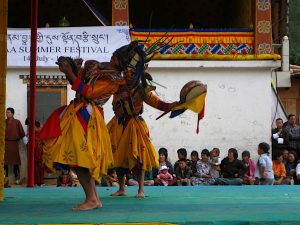
Leisure walk through a bridge adorned with countless prayer flags. Around 75 percent of Bhutan’s population follow the Vajrayana line of Bhuddism.
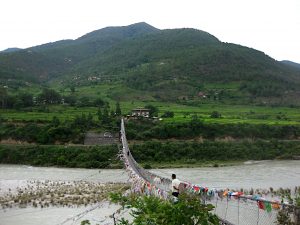
Surrounded by colorful Buddhist murals, I spin a prayer wheel at a temple in Punakha, on the country’s western side.
These ornately carved wheels contain thousands of mantras on paper.
Spinning the wheel, locals say, is like chanting these mantras a thousand times. The more prayer wheels you spin, the more good karma you accumulate. So round and round we go.
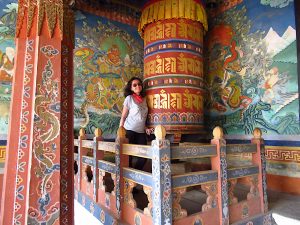
Punakha dzong. There are around 18 functioning dzongs, or fortress-monasteries, in Bhutan, all of which serve as the religious and administrative centers of their districts.
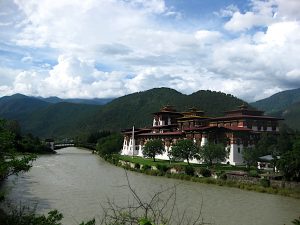
Terraced rice paddies and rolling hills are a common sight throughout the Bhutanese countryside. Age-old farming practices are still the norm here, and Bhutan aspires to have a 100 percent organic agricultural industry by 2020.
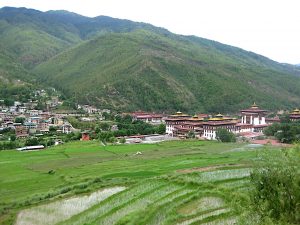
Buddhist prayer flags hang from a lookout point facing the Taktsang Palphug, a centuries-old monastery considered to be the national symbol of Bhutan.
Set on a cliff side high above the Paro Valley, this ancient temple complex is a pilgrimage destination for the Bhutanese.
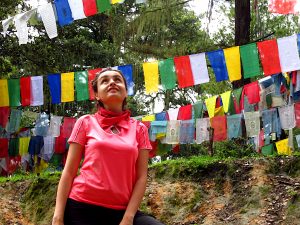
Hiking toTiger’s Nest Dzong, 10,000 feet above sea level.
There, according to legend, Guru Rimpoche (Precious Teacher), Bhutan’s patron saint who is considered the Second Buddha, arrived from Tibet around the year 800 astride a flying tigress, landing where Taktsang now clings.
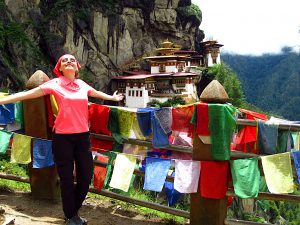
WATCH THIS
Bhutan – The Magical Kingdom
Need more inspiration to discover Bhutan? Find our suggested itineraries here or check out our Bhutan itineraries to discover more in this spectacular region.